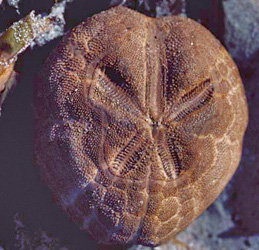Living Fossils Part 1 Download Show Info PDF
 |
"Living fossils" are plants or animals that closely resemble species known from fossils. Many of those listed below were considered extinct and only known through fossil evidence, but were later discovered to still be alive.
It is presumed by evolutionists that fossils are much older than is correct due to a failure of the scientific community to recognize the occurrence of the Biblical global deluge. Based on an incorrect naturalistic assumption, the stratified layers are believe to have accumulated gradually, and are separated by millions of years.
Animals, such as the dinosaurs, are believed to have gone extinct 65 million years before humans lived on earth. However, according to the Bible and its chronology, all plants and animals were created at the same point in time only a few thousand years ago. Most naturalists find this thought laughable and yet many plants and animals are alive today having changed very little from their relatives that reportedly lived millions of years ago. In fact, most living fossils are almost identical to their fossilized ancestors.
On The Next Origins
Watch as scientists, researchers and authors share relevant facts
and thought-provoking evidence supporting creation. Join us for Cornerstone TeleVision's unique program entitled, ORIGINS, and
then decide for yourself the truth about your human origins.
 | Donn Chapman reminds us, “It’s God’s view that He created you… and that should be your worldview too!”
These new programs seen on Cornerstone Television Network and our affiliates throughout the world, continue to offer a forum to use scientific evidence to validate the truth of creation.
|
Living Fossils Part 2 Download Show Info PDF
Living fossils: a powerful argument for creation
Don Batten interviews Dr Carl Werner, author of Living Fossils (Evolution: the Grand Experiment vol. 2)
Dr Werner explained what living fossils are and why he became so interested in them, collecting photographs of these fossils over the last 14 years: “Living fossils are fossilized animals and plants that look similar to modern organisms. I became interested in living fossils as a tool to test evolution.”
 “There are basically two models of how life came about: The evolution model suggests that chemicals coalesced and formed a living single-cell almost four billion years ago and then this changed over long periods of time into all other living things. Examples of evolutionary changes include a dinosaur into a bird, or a four-legged land mammal into a whale. The other model, creation, suggests that an external supernatural being (God) created all of the various types of animals and plants at once, and these organisms have changed little over time, other than variations within a basic type.”
“There are basically two models of how life came about: The evolution model suggests that chemicals coalesced and formed a living single-cell almost four billion years ago and then this changed over long periods of time into all other living things. Examples of evolutionary changes include a dinosaur into a bird, or a four-legged land mammal into a whale. The other model, creation, suggests that an external supernatural being (God) created all of the various types of animals and plants at once, and these organisms have changed little over time, other than variations within a basic type.” Dr Werner’s use of ‘type’ is similar to the biblical use of the word ‘kind’ in Genesis. For example, an animal can change, but only within its kind, such as a wolf into a dog—not radical change such as a four-legged mammal into a whale.1
Dr Werner continued, “Living fossils provided me a simple way to test evolution. If evolution did not occur (animals did not change significantly over time) and if all of the animals and plants were created at one time and lived together (humans, dinosaurs, oak trees, roses, cats, wolves, etc), then one should be able to find fossils of at least some modern animals and modern plants alongside dinosaurs in the rock layers. I set out to test this idea without any foreknowledge of any modern organisms in the rock layers. My results (as laid out in the book & video Living Fossils) showed that many modern animals and plants are found with dinosaurs—far more than I ever expected to find.”
Contrary to popular belief, modern types of birds have been found [in ‘dinosaur rock’] including: parrots, owls, penguins, ducks, loons, albatross, cormorants, sandpipers, avocets, etc.
“We looked only at fossils found in the dinosaur dig sites so that scientists who support evolution could not suggest that the fossils we looked at were not ‘old’. All of the fossils we used for comparisons were found in dinosaur rock layers (Triassic, Jurassic and Cretaceous).”
Many modern animals in dinosaur rock!
I asked Carl just how many modern types of animals he had found in the dinosaur rock layers.“We found fossilized examples from every major invertebrate animal phylum living today including: arthropods (insects, crustaceans etc.), shellfish, echinoderms (starfish, crinoids, brittle stars, etc.), corals, sponges, and segmented worms (earthworms, marine worms).
“The vertebrates—animals with backbones such as fish, amphibians, reptiles, birds and mammals—show this same pattern.”
Modern fish, amphibians and reptiles
“Cartilaginous fish (sharks and rays), boney fish (such as sturgeon, paddlefish, salmon, herring, flounder and bowfin) and jawless fish (hagfish and lamprey) have been found in the dinosaur layers and they look the same as modern forms.“Modern-looking frogs and salamanders have been found in dinosaur dig sites.
“All of today’s reptile groups have been found in the dinosaur layers and they look the same or similar to modern forms: Snakes (boa constrictor), lizards (ground lizards and gliding lizards), turtles (box turtles, soft-shelled turtles), and crocodilians (alligators, crocodiles and gavials).”
Modern birds
“Contrary to popular belief, modern types of birds have been found, including: parrots, owls, penguins, ducks, loons, albatross, cormorants, sandpipers, avocets, etc. When scientists who support evolution disclosed this information during our TV interviews it appears that they could hardly believe what they were saying on camera.”
Dr William Clemens, UC Berkeley, on modern birds being found in Cretaceous rock. (Clip from Living Fossils DVD)
Mammals
“At the dinosaur dig sites, scientists have found many unusual extinct mammal forms such as the multituberculates2 but they have also found fossilized mammals that look like squirrels, possums, Tasmanian devils, hedgehogs, shrews, beavers, primates, and duck-billed platypus. I don’t know how close these mammals are to the modern forms because I was not able to see most of these, even after going to so many museums.”
Paleontologists have found 432 mammal species in the dinosaur layers; almost as many as the number of dinosaur species. … But where are these fossils? We visited 60 museums but did not see a single complete mammal skeleton from the dinosaur layers displayed at any of these museums. This is amazing.
Many modern plants in dinosaur rock!
“In the dinosaur rock layers, we found fossils from every major plant division living today including: flowering plants, ginkgos, cone trees, moss, vascular mosses, cycads, and ferns. Again, if you look at these fossils and compare them to modern forms, you will quickly conclude that the plants have not changed. Fossil sequoias, magnolias, dogwoods, poplars and redwoods, lily pads, cycads, ferns, horsetails etc. have been found at the dinosaur digs.”Were any modern organisms not found?
“I did not find fossils of every organism living today in the dinosaur layers, rather I found representative examples from all of the major animal phyla living today and all of the major plant divisions living today. Taking it one step further, within these bigger groups, I frequently found representatives of all of the major groups or classes within a phylum. For example, for echinoderms (starfish, sea urchins, etc.) I found fossils of all of the major types living today. Same with the insects and the crocodilians, etc. I did not find any large mammals. The largest mammal discovered in a dinosaur layer so far (live size) is 30 pounds (13 kg). Nevertheless, with so many living fossils, both plants and animals, from all of the major phyla and all of the major plant divisions, it points to stasis (lack of change), not evolution. I should also note that if you look at the serious problems with the fossil layer system (the geological column as presented by geologists today), the absence of the bigger mammals can easily be accounted for, but I will save this for a later day.”Evolutionary story telling ‘unsinkable’?
I asked Dr Werner how evolutionary scientists deal with this evidence, given these remarkable findings. Dr Werner remarked, “If you whole-heartedly believe in a theory, you will always be able to sustain that belief—even in the face of contradictory evidence—by adding a rescue hypothesis to that theory. For example, if a scientist believes in evolution and sees fossils that look like modern organisms at the dinosaur digs, he/she might invent an hypothesis to ‘explain’ living fossils this way: ‘Yes I believe that animals have changed greatly over time (evolution), but some animals and plants were so well adapted to the environment that they did not need to change. So I am not bothered at all by living fossils.’ This added hypothesis says that some animals did not evolve. But if a theory can be so flexible, adding hypotheses that predict the opposite of your main theory, one could never disprove the theory. The theory then becomes unsinkable, and an unsinkable theory is not science.”Different names for the same animal?
Carl related how evolutionary scientists give fossils different genus and species names from the living forms, creating the illusion of evolution: “Let me give you an example. A scientist found a fossil sea urchin in Cretaceous rock that looks nearly identical to a modern Purple Heart sea urchin, but assigned it to a completely new genus (Holaster). If you saw that creature alive in the ocean you would recognize it as a Purple Heart sea urchin (genus Spatangus). The different name suggests that sea urchins have changed over time, but this is contrived ‘evidence’ for evolution. The fossil looks the same as the living one.” (See photos right).Evolution disproved?
I asked Dr Werner if his study disproved evolution.“It is becoming more and more difficult for the evolutionary model to stand in the face of this great number of living fossils. Adding the many other problems with evolution (fossil record, origin of first life, geological layering problems, similarities of non-related animals, etc.), you can declare with confidence that yes, the theory is finished. If a few larger mammals were found in the dinosaur layers, it should be over even for the die-hard believers of evolution, but people tend to go to their grave with the theories they learned in college. A new generation might well look at all of this and ask, ‘What were they thinking?’ ”
Related articles
Further reading
References
- Sarfati, J., Variation and natural selection versus evolution, Refuting Evolution chapter 2; creation.com/rech2 Return to text.
- They were a rodent-like order of mammals, named after their teeth (multiple rows of bumps, or tubercles, on their molars). Return to text.
- See Kielan-Jaworowska, Z., Kielan, Cifelli, R.L. and Luo, Z.X., Mammals from the Age of Dinosaurs: Origins, Evolution, and Structure, Columbia University Press, NY, 2004. Return to text.
Living Fossils - Organisms Unchanged After Millions of Years?
- Alligators and Crocodiles - The crocodile family is thought to have lived 230 million years ago and remains virtually unchanged since that time.
-
 Army Ants - date back 100 million years to the time of the dinosaur
Army Ants - date back 100 million years to the time of the dinosaur- Army ants defy evolution Cornell News 5/5/03 "army ants in essence have not changed a bit."
- Cockroaches - dates back 350 million years
- Mega cockroach News in Science - 08-11-2001
- Coelacanth - Dates back 400 million years. The Coelacanth fossil pictured at right pre-dates the dinosaurs by millions of years, and was once thought to have gone extinct with them 65 million years ago until it was discovered alive and well in 1938.
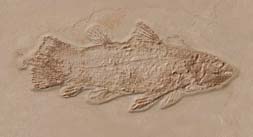
- Secular References
- New 'living fossil' identified BBC News Sci-Tech 3/25/99
- DINOFISH.com - coelacanth: The Fish Out of Time
- 'Living fossils' discovered off South Africa coast - December 1, 2000 CNN.com
- Sulawesi Coelacanth - The Discovery
- Creationist References
- Living fossils like the Coelacanth by Don Lindsay
- Crinoid or Sea Lilly have been found in sedminents dating back 150 million years and yet the modern living variety is virtually identical.
- Living fossils by Joachim Scheven. Creation 17(3):52 June 1995
- Undersea mountains yield living 'fossils' - June 26, 2000 CNN.com
-
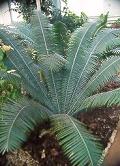 Cycads date back 240 million years ago
Cycads date back 240 million years ago- Cycads Living Fossils
- The Cycads Fossils of the Past Palm and Cycad Society of Florida
- Dragonfly dates back 230 million years, but is unchanged in almost every detail
- Emperor Dragonfly
- The Energizer Bunnies of Evolution - Science Musings 1993-7-26
-
 Ginkgo tree belongs to the family Ginkgoaceae which dates back to 270 million years. They were thought to be extinct until they were discovered in 1691 in the Japan.
Ginkgo tree belongs to the family Ginkgoaceae which dates back to 270 million years. They were thought to be extinct until they were discovered in 1691 in the Japan.
- Horseshoe Crab - Believed to have lived 300 million years ago, but remain almost identical today.
- Horseshoe Crabs - A Living Fossil by Maryland Dept of Natural Resources
-
 Nautilus - believed to have lived 500 million years ago, but remains almost completely unchanged
Nautilus - believed to have lived 500 million years ago, but remains almost completely unchanged- Ammonite Fossils & Ammonites Evolution by Discovering Fossils
- Chambered Nautilus
- The Chambered Nautilus the John Templeton Foundation
- Laotian rock rat - New species from an ancient group of rodents thought to have died out 11 million years ago
- New Pictures of 'Living Fossil' BBC News. 6 April 2006
- Neopilina molluscs - Discovered living in the early 1950s these mollusks share a close relationship with fossils that existed about 400 to 500 million years ago.
- Neopilina A Living Fossil by Clausen, C. D. Origins 3(1):56-59 (1976).
- Salamanders
- Salamander Origins Pegged To Asia National Geographic News 3/28/2001. A recent fossil find in China was dated to 150 mya, and is virtually unchanged from what we find living today in the neighborhood swamp.
- Sturgeon is claimed to be 250 million years old, and living since the time of the dinosaurs.
- Seven-foot living 'dinosaur' lurks in Oregon Eurek Alert 12/19/02
-
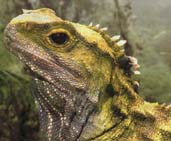 Tuatara is a lizard pictured at right which is thought to have been around longer than any other living reptile, and unchanged in over 200 million years.
Tuatara is a lizard pictured at right which is thought to have been around longer than any other living reptile, and unchanged in over 200 million years.
- Velvet Worm dates back 500 million years
- Velvetworm a Living Fossil USDA ARS
-
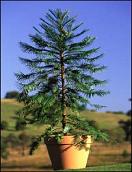 Wollemi Pine - "Dinosaur Tree" - Not discovered living until 1994, this genus of trees dates back to about 150 million years ago and coexisted with the dinosaurs.
Wollemi Pine - "Dinosaur Tree" - Not discovered living until 1994, this genus of trees dates back to about 150 million years ago and coexisted with the dinosaurs. - Jurassic pot plants on sale soon - BBC NEWS Science-Nature 9/25/2003
Living Fossil Quotes
- Niles Eldredge, Curator, American Museum Of Natural History, under the heading "Living Fossils", in his book, FOSSILS, 1991.
- "...there seems to have been almost no change in any part we can compare between the living organism and its fossilized progenitors of the remote geological past. Living fossils embody the theme of evolutionary stability to an extreme degree. ....We have not completely solved the riddle of living to an extreme degree. ....We have not completely solved the riddle of living fossils. " p.101, 108
- "...were thought to have been extinct by the end of the Middle Devonian [385 MYA]. Modern Neopilina species, however, were dredged from the deep oceans in the 1950's..." p.101
- P. Arduini and G. Teruzzi cite Neopilina as an example, PREHISTORIC ATLAS, 1982.
- "There are also numerous organisms, in the present day fauna and flora, which can be regarded as living fossils; one of the best known among them is Neopilina, the only living representative of a class of mollusks...thought to have been extinct for 350 million years before 1957, when Neopilina was caught off the coast of Costa Rica." , p.78
- "The Gingko biloba is the sole surviving species of a very old group of gymnosperms which died out 100 million years ago." PREHISTORIC ATLAS, 1982, p.78
- Keith S. Thomson, Ex. Officer, Academy of Natural Sciences. LIVING FOSSIL, 1991
- "Off the coast of southern Africa, in the winter of 1938, a fishing boat called The Nerine dragged from the Indian Ocean near the Chalumna River a fish thought to be extinct for 70 million years. The fish was a coelacanth, an animal that thrived concurrently with dinosaurs..." From bookcover.
- "The first members of this group appeared some 424 million years ago in the Silurian and look quite like the modern forms. The last fossils became extinct about 50 million years ago." p.72
- "This species was widespread and reasonably common in the Pliocene of North America... The tree was thought to be extinct worldwide until living specimens were found in central China in 1945." p.72
- Sue Rigby, British Geological Survey, Nature Vol.363, p.209, 3/18/93
- "All paleontologist dream of finding a 'living fossil.' Noel Dilly, it seems has done so... As graptolites are arguably the most important zone fossils of the Lower Palaeozoic (570-360 million years before the present), this is far from an esoteric issue."
Creationist Perspectives
-
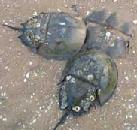 Examples of Living Fossils by Kevin Miller
Examples of Living Fossils by Kevin Miller - Living Fossil Trilobites?
- Living Fossils
- Living Fossils
- Living Fossils by Evidences of Creation.com
- Living Fossils by Ian Taylor
- Living fossils by Dr Luke Randall (C. Biol., M.I. Biol. M.Sc., Ph.D)
- ‘Living fossils’ enigma by David Catchpoole Creation Ex Nihilo 22(2):56
March–May 2000 - Living Fossils - How Significant Are They? CRS Newsletter 1998
- Living fossils like the Coelacanth by Don Lindsay
- Living Fossils - Spot the difference
- Magic Disappearing Fish! Quantum History
- Missing Links, Living Fossils by Brad Hurrub
- Scaphognathus crassirostris - The Rhamphorhynchoid Pterosaur A "Living Fossil" Until the 17th Century. Presents evidence that pterosaurs may have flown the skies a couple thousand years ago
- Spot the difference--fascinating living fossils Creation 19(3):52 June–August 1997
- The Profusion of Living Fossils by Henry Morris BTG No. 143a November 2000
- "Living fossil" discovered in SW China Experts recently discovered around 1200 Chinese Hynobiidaes in Guiding county Southwest of China's Guizhou province. These are a type of amphibian species around 300 million years old that once used to live in the dinosaur period. People's Daily Online. July 21, 2006
- Oldest hummingbird fossils found - BBC NEWS Science-Nature 5/6/04
- Jurassic pot plants on sale soon - BBC NEWS Science-Nature 9/25/2003
- Ginkgo is living fossil Ancient plants mirror modern trees. Nature June 2003
- Army ants defy evolution Cornell News 5/5/03
- Seven-foot living 'dinosaur' lurks in Oregon Eurek Alert 12/19/02
- Giant bird spotted in Alaska 10/16/02
- Mega cockroach News in Science - 08-11-2001
- Salamander Origins Pegged To Asia National Geographic News 3/28/2001. A recent fossil find in China was dated to 150 mya, and is virtually unchanged from what we find living today in the neighborhood swamp.
- 'Living fossils' discovered off South Africa coast - December 1, 2000 CNN.com
- George Mason University Professor Studies Living Fossils Discovered in Bahamas 7/2000
- Undersea mountains yield living 'fossils' - June 26, 2000 CNN.com
- New 'living fossil' identified BBC News Sci-Tech 3/25/99
Secular Resources
- Living Fossils by eNature.com
- Living Fossils
- Living Fossils Living Botanical Fossils by Palomar College
- Living fossils - Suite101.com May 2004
- Living Fossils of the Deep, An Expedition to the Bahamian Seafloor Smithsonian's National Museum of Natural History
- Why yes, there are living fossils!
- Thunderbird hoax or photo of Pteradactyl
- Trilobite Papers 5 ... Denman Institute for Research on Trilobites



